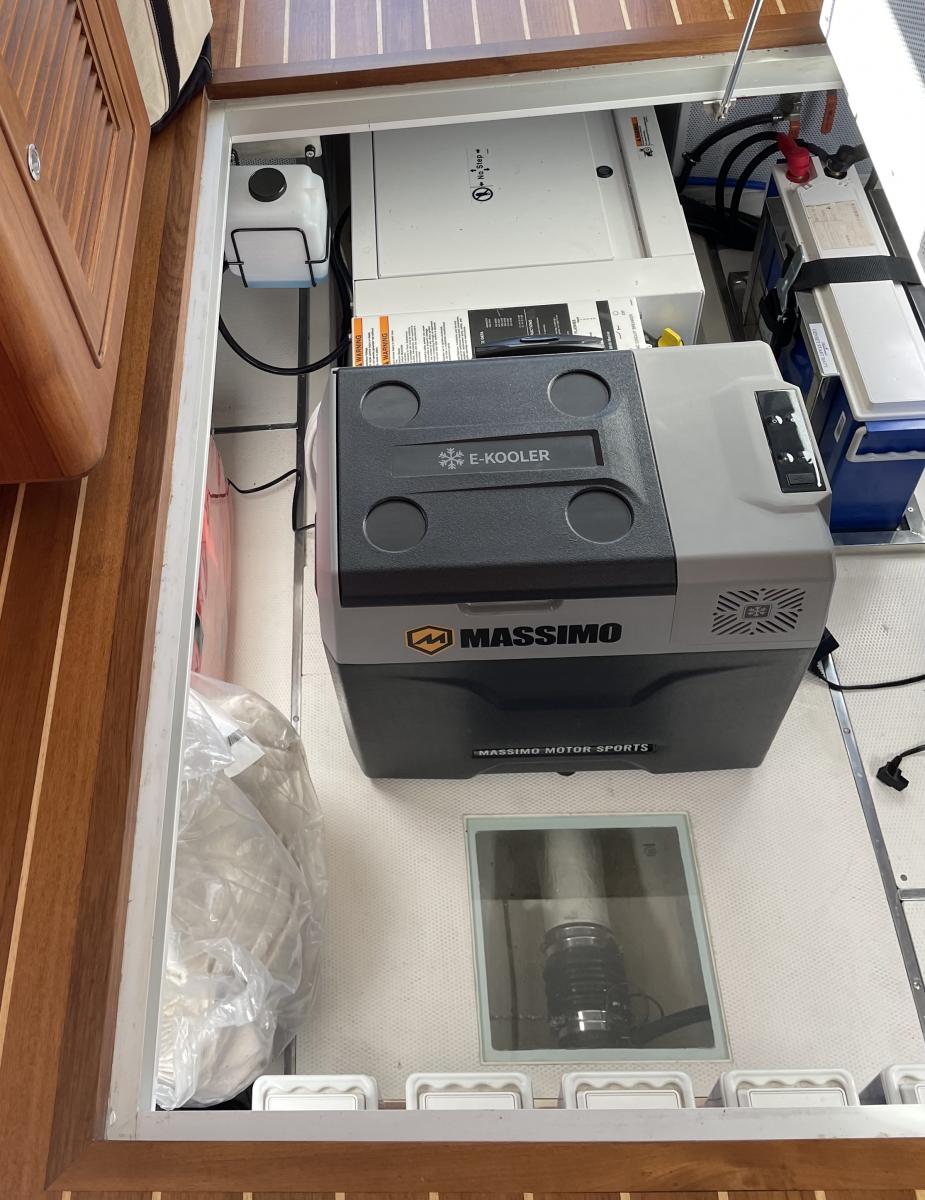Hi,
This is a follow-up discussion regarding the diesel oil change intervals in regard to ULSD use.
As you might know, I am and will be religious about maintaining my new Helmsman to the “T” (capital T).
After hours of research and corresponding with a few folks in the marine industry, it appears that the oil change duration of question may be the difference between diesel with sulfur and ultra-low sulfur diesel (ULSD) with it’s reduction in sulfur acids. I can only speculate the reasoning for increasing the length of oil change duration (2x) as prescribed by Cummins as there is no explanation in the manual; however, multiple references discuss oil formations and acid reductions in the ULSD fuel.
The oil change durations are either 250 hours or 500 hours if using ULSD or 1 year whichever comes first, I’ve found nothing through my contacts or on the web regarding the direct correlation between ULSD and oil change durations as Cummins claims.
However, I have found a few articles describing ULSD and the reduction of acids that corrode the engines. That being ULSD significantly reduces the sulfuric acid in the fuel, thus eliminating the use of detergents in engine oils of the past and today’s oils are formulated to address remaining acids.
While I have not found anything related to the direct correlation of ULSD and the extended life of lubricating oil.
I have searched for hours on this subject. The best two links I found are:
2. Discussions on variables to consider for oil changes:
Cummins Diesel 6.7L Engine Oil Change Interval [Avoid Costly Repairs] - XL Mechanical Service Ltd.
Other related links:
https://xlmechanicalservice.ca/technical-info/cummins-oil-change-interval/
In my queries via conversations and emails from supporting folks and viewpoints:
1. Van referred to follow the manual for maintenance.
2. Contacted Cummins Everett Rep and he cut and pasted the same paragraph from the manual but then said change at 250 hours and 500 hours thereafter.
3. Mike Beemer Department Tech Chair from Skagit Valley College a Diesel guru which I took diesel classes from didn’t define the difference with ULSD, but knows that cruisers in the NW put on 400-500 hours per year and change oil once a year. In 15-20 years, he hasn’t seen a problem with that schedule.
4. Tony Athens (very passionate Diesel expert and consultant) found the spec interesting (I think surprised) but wasn’t in a position to comment on the reasoning or chemistry etc. While he believes Cummins would have tested this out, he remains vigilant to change at 250. Also big on making the engine room spotless as clean air intake is a big factor to the length of the life of the oil. He did mention 2 years though if only 100 hours.
5. I have contacted Cummins online and asked if the Engineering Team could explain the differences. If I hear back, I’ll make the last update on this subject.
Bottom line, I believe if I follow the script, I should be good and covered under warranty. So, I think I’ll do the 250 hours remotely and then again every 250 hours instead of 500. That’s cheap insurance for an expensive engine. I think I will also send in an oil sample to Blackstone for as cheap $35 once a year. As well as the tranny oil. Look up Blackstone Laboratories (blackstone-labs.com)
I also saw several good arguments to change the oil before it’s stored for the winter rather than after bringing it out of storage. Basically, it will have acids in it, and will be fresh the next spring if not run. If closeif tad over 250, I'll change when I get back.
Let me know if you have a different strategy or understanding why Cummins would 2x if ULSD..
Tom
Also If you cant open the ULSD sulfur content, here’s a short cut n paste below:
Diesel fuel contains sulfur which derives from the original crude oil source and can still be present after refining. After combustion in the engine, the sulfur in fuel forms particulates that are a primary contributor to air pollution and the cause of harmful corrosion in the engine.
Before global efforts to improve air quality and remove sulfur from fuel, high levels of detergent additives were a necessary component of engine oil to protect engine parts from the damage caused by sulfur. Detergency was so important that a common way to interpret engine oil performance or oil life was by measuring the level of detergents in an oil by the total base number (TBN).
Regulations to reduce vehicle emissions over the past several decades have dramatically reduced the allowable sulfur content in diesel fuel. Today, sulfur content in diesel fuel in both the United States and Mexico is 97% lower than seen throughout most of the 20th century. This type of fuel is commonly referred to as ultra-low sulfur diesel, or ULSD.
Impact of Sulfur on Engine Hardware
After combustion, sulfur from diesel fuel creates sulfuric acid that causes corrosive wear on the metal surfaces of an engine. Corrosion of a surface within in a dynamic system such as the cylinder wall/liner can lead to corrosive wear; surface corrosion layers are removed through sliding or abrasion.
All acids formed within the engine have the potential to cause corrosion, but the risk of corrosion depends on their acidity. The acidity of a fluid is measured according to the mixture’s “pH”. Both the concentration (amount) of acid present, and the strength of the acids in the mixture, will increase the risk of corrosion.
There are three main types of acids that form in an engine:
• Sulfur acids are strong acids that form from combustion of fuel containing sulfur. When high sulfur fuel is used, sulfuric acids are the most significant corrosive acids.
• Nitrogen acids are strong acids that form from nitrogen oxides that result during lean combustion (a process referred to as “nitration”).
• Organic acids are weaker acids that form from partial combustion of the hydrocarbon fuel, or decomposition of the engine oil (processes referred to as “oxidation”).
New Types of Oil Formulation for ULSD Fuels
Fuel quality, including fuel sulfur levels, plays a big role in the requirement of the engine oil. Fuel quality can impact engine hardware, so the oil must be formulated to protect against these impacts. Using the correct measure for the way the oil performs is therefore crucial.
The level of sulfur acids created by today’s ULSD fuel are so low that the need for elevated levels of detergents that produce high TBN no longer exists. Instead, protection against organic acid corrosion has become a more necessary requirement of modern engine oil.
Preventing organic acid corrosion with today’s ULSD fuel requires engine oil formulations with a complex mix of detergent, antioxidant, and corrosion inhibitor additives to achieve optimum performance. Using an appropriate measurement for the way modern oils perform is a new best practice in oil condition monitoring.







